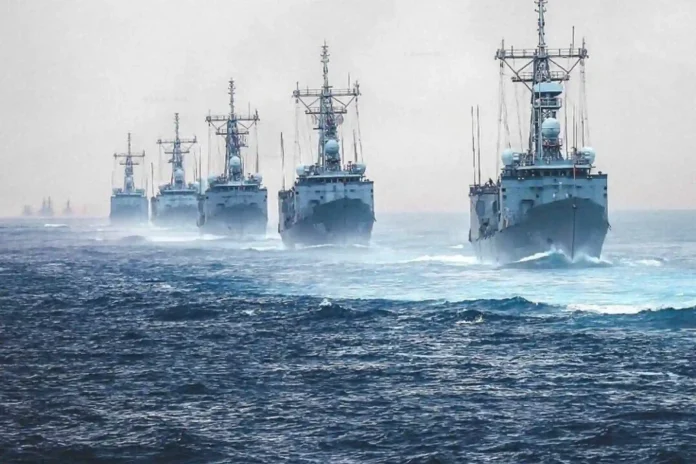Naval battleships, epitomized by the “CC Timeline Battleship”, are the icons of strength and power on the high seas, but their evolution from modest wooden ships to massive steel combatants is fascinating. Imagine the crash of steel, the boom of guns, and seeing the outline of massive ships slashing across the waves – battleships have been at the center of some of history’s most spectacular and crucial events. How did these ships evolve over time, and why are they so important in history? Throughout this article, we’ll discover the key instances, revolutionary inventions, and significant battles that transformed warships into naval power icons. Let’s go back in time and analyze how these massive ships influenced the course of maritime ships.
The Origins of Naval Warfare: From Sails to Cannons
Explore how maritime combat began with the period of sails and evolved with the adoption of canons:
The Age of Sail: Exploring New Horizons
The medieval era of sail lasted from 1500s to 1800s, and witnessed the emergence of systematic naval combat. Over this time period, countries like England, Spain and Netherlands venture on spectacular trips not merely to discover the unexplored places, but also to establish their dominion over the oceans. These initial naval battles were eagles with massive wooden warships called the galleons and men-of-war, which depended primarily on wind power for propulsion.
The Emergence of Battleships
Over the period, marine operations transformed and so did the ships. The cannons revolutionized naval combat. This impacted the ammunition to play an important role in the battles, not just the ability of the sailors or the mobility of the warships. The emergence of gun ports enabled ships to load more guns and deliver destructive broadsides. This breakthrough changed naval engagements from disorganized battles to integrated exchanges of fire.
Ironclad Revolution: Steel Hulls and Rotating Turrets
Naval technology evolved after the emergence of ironclads in the middle of the nineteenth century. These warships armed with iron were practically invincible to the wood ships that had dominated the seas for many years. Ironclads are not merely contemporary weapons, but also include rotating guns that provide more accuracy and greater firing range. This invention eliminated the requirement for ships to line up with the adversary in order to unleash their weapons making them more adaptable in warfare.
Significance of CC Timeline Battleship in World Wars
During World War 1, Battleships played significant roles in various maritime wars. The British Grand Fleet and the German High Seas Fleet engaged in the biggest naval engagement in history during this battle, which highlighted the value of battleships in controlling maritime traffic and defending national interests. Battleships were used extensively in major engagements throughout World War II as well, but more flexible and adaptive naval resources ultimately took their place.
The Battleship’s Decline: Aircraft and Missiles Take the Lead
During World War 1 and 2, the battleship’s power was on the top. However, their power was challenged by the emergence of aircrafts and the growing potential of submarines. The shift in naval tactics was signalled by the Japanese assault on Pearl Harbour in 1941, which shows how vulnerable the mighty battleships can be to air strikes. This notion got further solidified by the Japanese planes destroying the HMS Prince of Wales and HMS Repulse.
Preserving the Legacy of Naval Ships
Battleships are not the important weapons in naval combat anymore, but still their legacy continues to live on. Several ancient ships have been reserved in museums and memorials, honouring their historical significance and providing a window to the past. The legacy and the historical ships continue to inspire and teach the future generations and visitors about the history and significance of naval combat.
The journey from sails to cannons and from wooden vessels to metal giants illustrates how navy battleships, including the “CC Timeline Battleship”, have changed over the years. After serving as the symbol of naval might, warships influenced several battles’ tactics and results. Although they have been superseded by more modern technology, their historical significance cannot be debated, and their tales continue to serve as a tribute to human inventiveness and the unwavering quest of supremacy in the seas.



